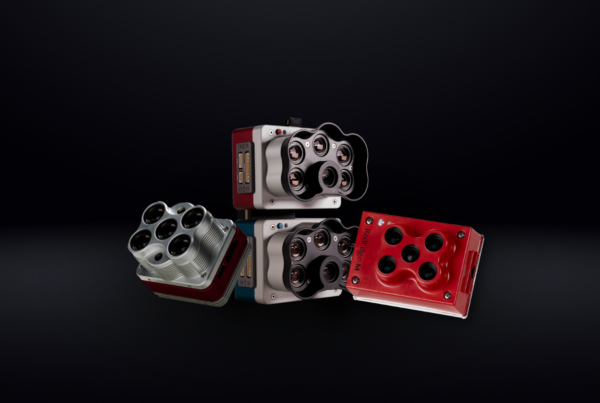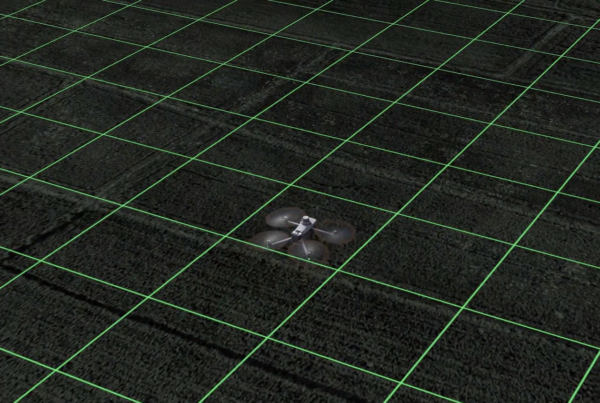
UAVs are an essential component of smart farming and precision agriculture. Aerial monitoring allows farmers to take control of their crops, from collecting data for land management to identifying pests and diseases.
Drones also help farmers determine and adjust soil conditions, like proper humidity levels, before it impacts production. One of the most popular and important uses for drone technology in agriculture involves chemical and fertilizer dispersion.
UAV Agility for Chemical Dispersion
UAV implementation in farming practices offers agile workflow alternatives that support sustainable practices, and promote savings for end-consumers. Traditional methods of fertilization and pesticide use involve drenching crops with the selected substance; this method results in runoff which can saturate groundwater and contaminate other bodies of water. Drone dispersion prevents oversaturation and is an agile alternative to ground vehicles. According to a report done by researchers at Taylor’s University, “Design and Implementation of an Agricultural UAV With Optimized Spraying Mechanism”, UAVs can complete spraying and chemical dispersion up to 40 times faster than traditional methods.
Additionally, drone technology can help farmers reduce water consumption by 90% and overall pesticide costs by 30-40%. By reducing costs and improving crop yields, agricultural drones can generate up to $115 billion in production, according to a market report conducted by McKinsey & Company.
Because constant monitoring is necessary for disease and pest prevention, it is usually one of the most labor-intensive and expensive processes for farmers and agronomists. Crop monitoring usually requires field workers to conduct weekly or daily inspections of crops, searching for visual signs of abiotic stress, disease, pests, or weeds. Depending on the size of the plot, manual observation can take hours. Farmers also run the risk of product loss due to late detection—agile drone technology allows farmers to schedule routine aerial inspections, and release precise amounts of pesticides or fertilizers effortlessly. The convenience of quick action helps farms increase yields without labor-intensive operations.
FAA Regulations for Agricultural Drones
As the demand for sustainable practices increases, many farmers are turning to drone technology to help decrease oversaturation. The FAA developed specific guidelines to help agricultural organizations do just that—through a Part 137 license, farmers can legally use drones to spray and disperse various chemicals.
The Part 137 license, formally called a 14 CFR Part 137, falls under the Advanced Operations category of the FAA’s regulations for Unmanned Aircraft Systems. This regulation allows farmers to spray economic poisons with a UAV; this includes disinfectants, pesticides, plant regulators, and defoliants.
Just like there are processes to apply for other licenses, those who wish to have a Part 137 license must go through a certification process in order to become qualified agricultural aircraft operators. A common misconception is that you do not need to have a Part 107 certification in order to fly an agricultural drone, however, all pilots need a Part 107 license before they can apply for a Part 137 license.
The certification process for an agricultural drone pilot is more complex, mainly because pilots will be dispersing potentially toxic chemicals, and need to have a solid understanding of local laws and crisis management. After applicants pass the pre-application meeting, they can begin the formal application process. At this point, the FAA will review the intended areas of operation, including homesites and satellite locations. They will all review what materials the pilot will be dispersing and at what level–whether commercial or private. Individuals must also demonstrate whether they intend to operate as an individual, corporation, or partnership.
Once the certification process is complete, users will also go through a document compliance phase, and the final inspection and demonstration phase. Each of these phases requires additional compliance, documentation, and knowledge testing.
Documentation & Drone Fleet Management
Ongoing management of an agricultural fleet is required by the FAA for both commercial and private aircraft operators. It is necessary to maintain accurate record-keeping, including maintenance and repair schedules of the UAV fleet, inspection records, and all dispensing equipment. While it is possible that regulations that govern documentation and data management may change, we suggest keeping an appropriate schedule for drone battery changes, and regular aircraft maintenance.
Better maintenance increases the life expectancy of any drone—but eventual replacements should be factored into any drone program. On average, drones last 2-3 years; this number may change based on use, manufacturer updates, and other factors. Downtime can be prevented by keeping track of the date of purchase, the use hours, and maintenance/repairs done on each drone in a fleet. Battery life span is often overlooked when implementing drone programs. Drone batteries last about 250 cycles and should be replaced within a specific time schedule to prevent malfunction.
Each drone typically comes with one battery, and companies often choose to buy kits or additional batteries to have as backups. For larger drone fleets, managing the lifecycle of each drone’s battery set can become difficult to keep track of.
Drone Nerds works closely with agricultural drone manufacturers and connects farming organizations to the best solutions for their needs. We provide expert consultation, FAA registration guidance, and post-implementation maintenance plans to keep your UAV program running smoothly. Our proprietary Always Flying™program was designed to help organizations manage their fleet effortlessly.
If you’d like to learn more about what drone solutions are available to you, contact our team at experts@dronenerds.com.




